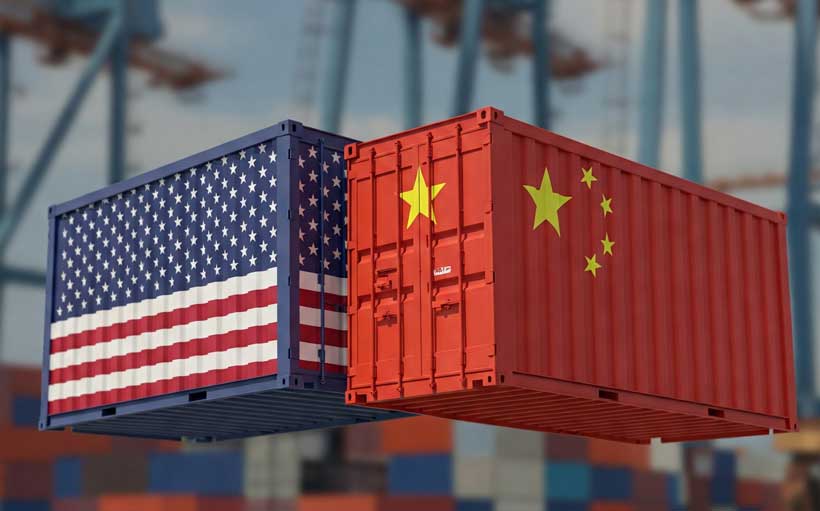After the first Trump tariffs targeted the big US trade partners – Mexico, Canada and China – tariff threats are shifting from steel and aluminum to computer chips and pharmaceuticals, the European Union; even the world.
The US also has a major trade deficit with multiple trading economies, including Germany, Japan, South Korea and Vietnam, which are likely to be next in the firing line.
Tariff is a tax levied on imported goods and services. Yet, the Trump administration has shuffled aside concerns about these levies fostering inflation or snarling global supply chains. That’s a serious mistake. In the US, wholesale prices are already rising on higher food and energy costs, adding to the growing pile of bad inflation news ahead of more US tariffs. Internationally, these risks are real, costly, and huge.
China’s stabilizing economy
As the tariff wars begin, China’s economy has showed progressive signs of stabilization since the fourth quarter of 2024, as the impact of the November stimulus measures has kicked in. In the period, growth accelerated from 4.6% to 5.4% with annualized 5.0% last year. Hence, too, the recent upgrade of China’s GDP growth by the International Monetary Fund.
What’s fueling these gains? Industrial production has proved resilient on the back of both domestic and international demand, particularly in electric cars and solar cells. The most prominent part of the growth story is the strong expansion of China’s advanced technology, electronics and automobiles; and the pace in industrial robotics is almost as strong. Meanwhile, consumption has been fueled by equipment and durable goods upgrade.
Two main challenges remain. At home, the nearly 11% fall in real estate investment suggests property markets are still ailing. But in 300 Chinese cities, the decline of residential inventory is slowing.
The external challenge involves the impending trade/tech wars that the Trump administration initiated in 2017, the Biden administration expanded and the new Trump White House is broadening and escalating worldwide.
Tariffs as economic coercion in the Americas
On February 1, President Trump imposed 25% tariffs and 10% duties on energy products on Canada and Mexico, and 10% tariffs on China. These are America’s greatest trade partners and the US has a trade deficit with each. These tariffs alone would cost an average US household over $1,200 a year.
Starting with the heated US exchanges with Colombia, the White House used US economic muscle hoping to push Canadian Prime Minister Justin Trudeau and Mexico’s President Claudia Sheinbaum into a US-controlled North American bloc against China. Hence, too, Secretary of State Marco Rubio’s pressure over Panama and President José Raúl Mulino’s decision to end a key development deal with China, to avoid the US threat to retake Panama Canal by force.
After talks, levies against Canada and Mexico will be delayed for 30 days. Yet, the proposed tariffs on Canada and Mexico would reduce long-run GDP by 0.3%, the imposed tariffs on China by 0.1%, and the proposed expansion of steel and aluminum tariffs by less than 0.05%, by some estimates. But as foreign retaliations kick in, so will these numbers change again.
Moreover, a trade war between the US and its two largest trading partners would penalize US income, hurt employment and accelerate inflation.
As Trump’s tariffs went into effect against China, Beijing announced a broad package of economic measures on February 10 targeting the US – and more will follow if needed.
Huge costs of unwarranted tariffs
Half a decade ago, Trump tariffs on imports from China accounted for $396 billion or more than 90% of the trade affected. Yet, the first round of the Trump tariffs with Canada, Mexico and China alone would cover far more trade in dollar value.
Trump’s four tranches of tariffs on Chinese goods in 2018-19 covered imports valued at $360 billion at the time. Today Canada and Mexico and China supply more than two-fifths of all US imports. New tariffs on the two countries plus additional tariffs on China could cover imports valued at over $1.3 trillion in 2023. That’s over 3.5 times more than half a decade ago.
It is just the opening salvo in a series of US tariff moves anticipated in the coming weeks. Factor in the potential/likely retaliation rounds by US tariff targets and the Trump administration’s new “reciprocal tariff” plan, and the final toll could prove far higher.
The darkened global economic prospects
Ironically, US tariffs are legitimized by a flawed victimization narrative in which America is depicted as a target of wrongful economic and geopolitical measures. In reality, the imposed tariff levels are about geopolitical coercion, not about economic facts.
The threatened wave of tariffs could worsen trade tensions, lower investment, hit market pricing, distort trade flows, disrupt supply chains and undermine consumer confidence. And that’s just an overture for what could ensue in the next four years.
We are in for a far costlier, global déjà vu all over again.
Author’s note: The original commentary was published by China Daily on February 20, 2025








